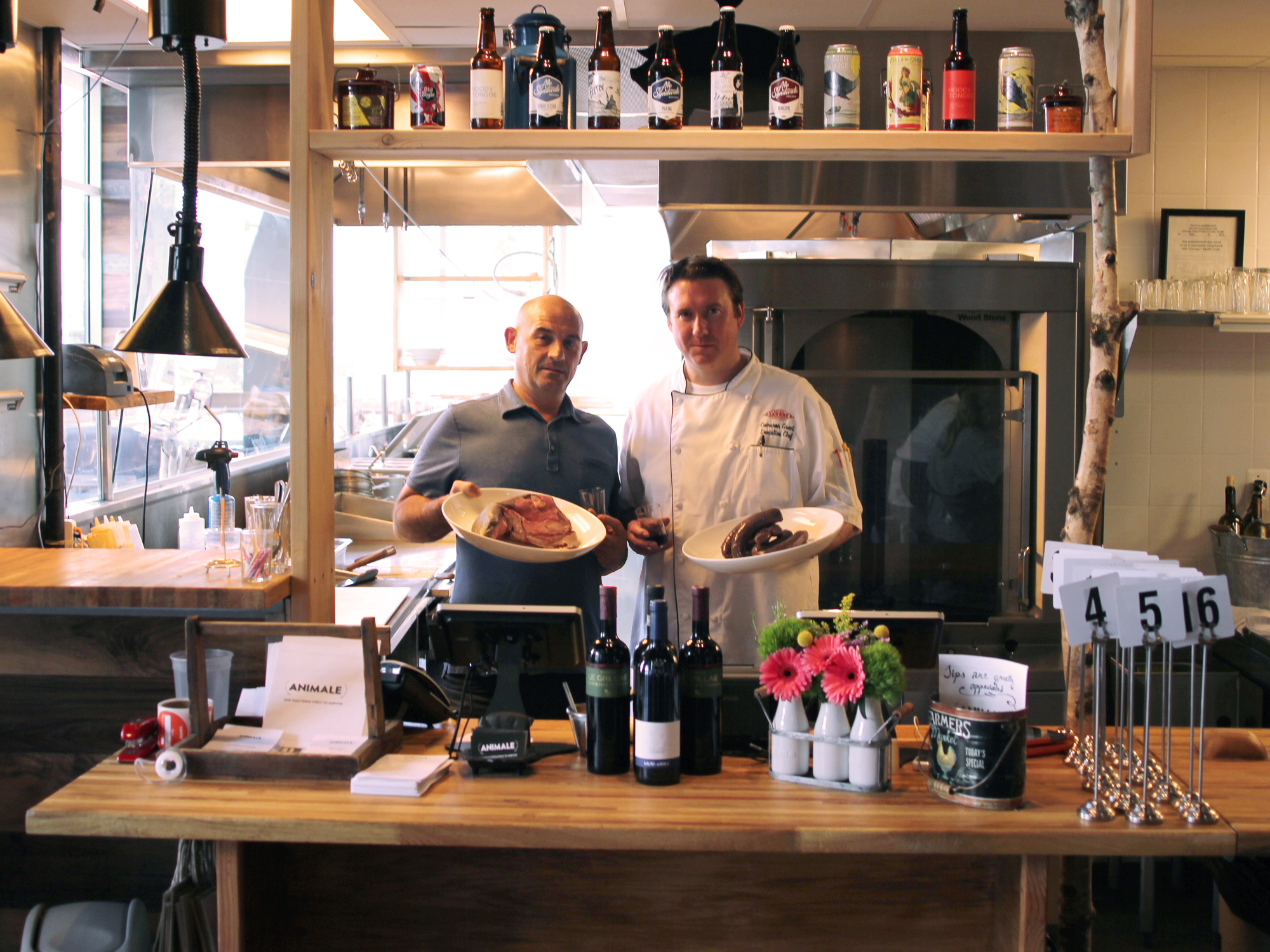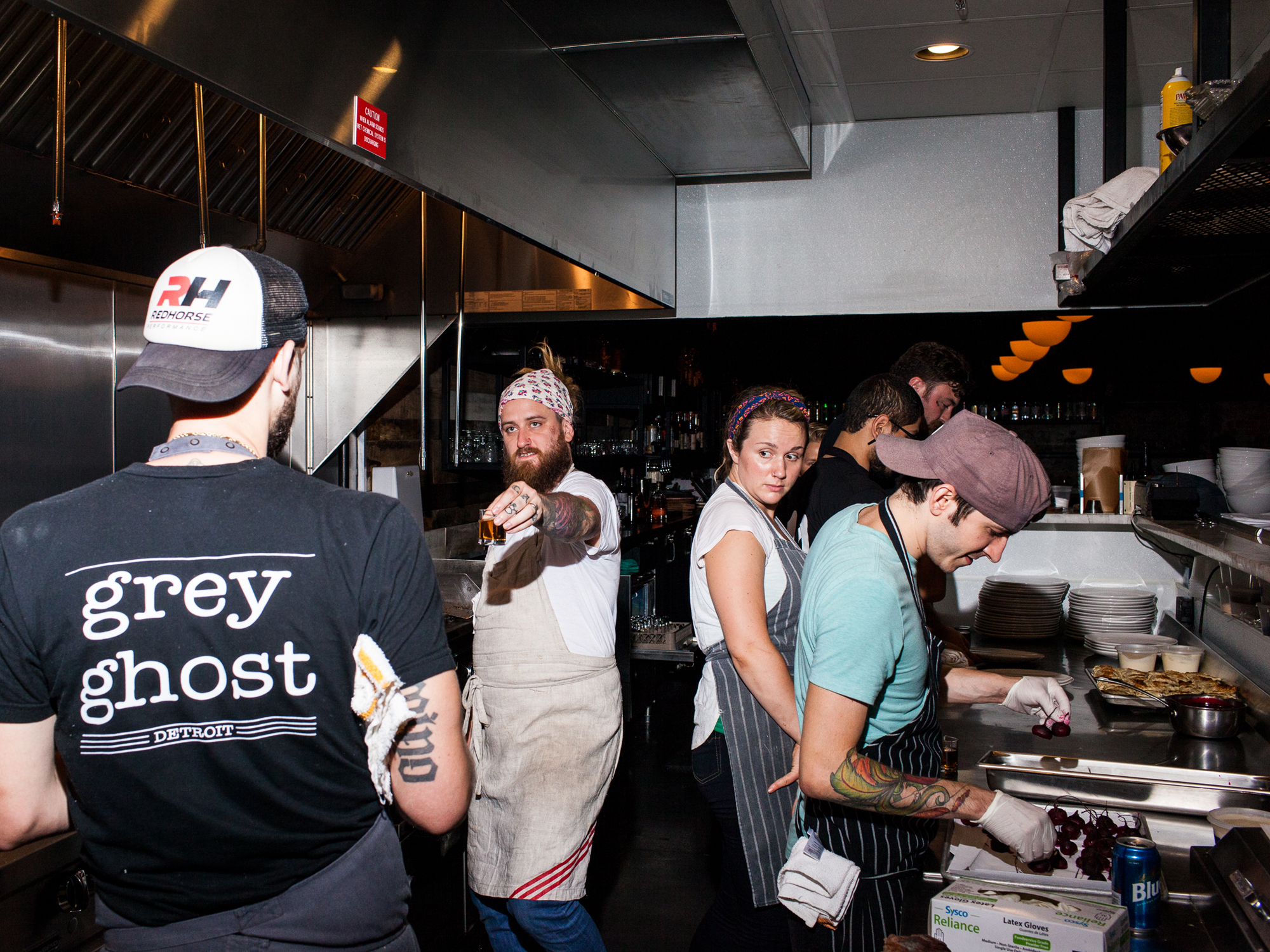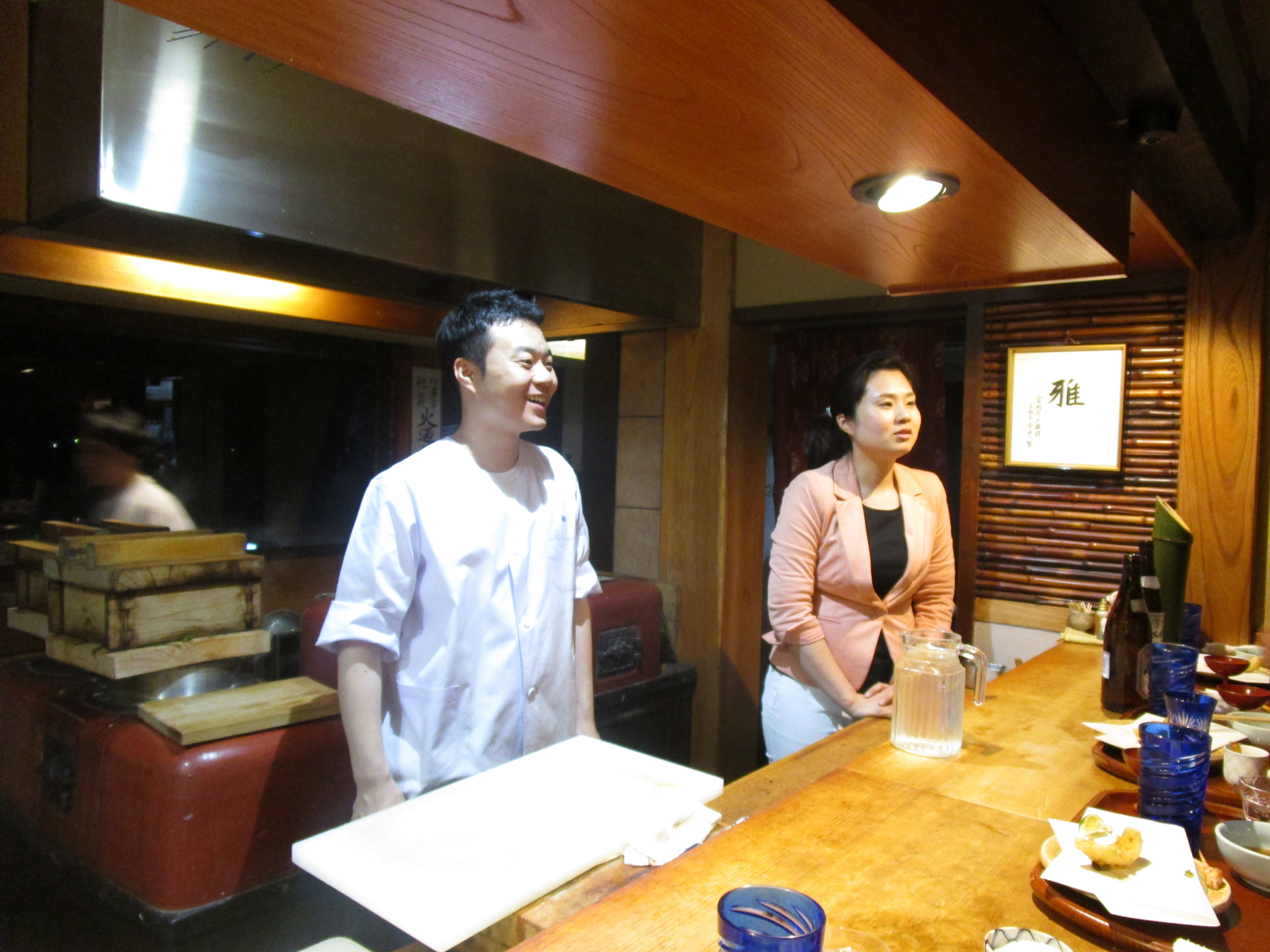Editor’s note: Scott Malloy is a Chicago cook who fell in love with Japanese food—and has pursued that love at restaurants including L2O, Arami, Yusho and most recently Momotaro. (You can read more about his obsession here.) But he and his wife Becky (who is the office manager at Grace, as well as a potter who has made cups and bowls for several local restaurants) had never actually been to Japan until early this year. Now, as the Malloys prepare to leave Chicago, Scott tells the story of their first visit to the source of the cuisine to which he is devoting his life.
IT’S NEW YEAR’S EVE. I’M EXPEDITING THE FINAL TICKET of the night at Momotaro and there is only one thing on my mind. It isn’t what party I’m going to or how much I’m going to drink. It is the trip of my life. In 5 hours I will be boarding a plane to a place I have dreamt about for 20 years. It is the country whose cuisine I have devoted my career to.
Japan!
This is a trip I have been planning for years and cancelled twice. This time, though, it is real. For six days I will be on a full-on culinary gorgefest. My wife and I began mapping out this trip months ago. We got passports, arranged for Japan Rail passes, booked a hotel, and secured reservations. I’d be lying if I said I wasn’t nervous. I’ve put these restaurants on a pedestal—what if I don’t like the food? What if it’s too good and scares me away from cooking Japanese food? What if we spent all of this money and feel it was wasted? These are just a few of the many things running through my mind as we board the plane.
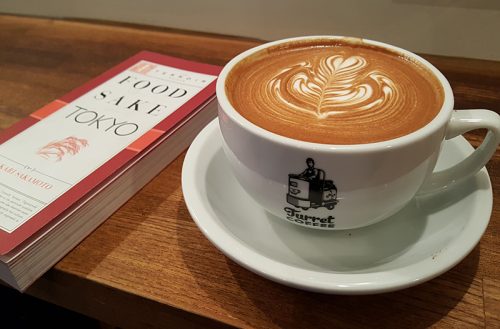
Two things we relied on in Tokyo—this book, and coffee at Turret in Ginza
I am in search of something: legitimacy, authenticity, and, ultimately, validation. These things are what many foreign chefs cooking non-native cuisines seek. Do I need to live, work, and fully integrate myself into a society in order to gain legitimacy? Can I fill a restaurant without doing so? Do I need to cook things to exact recipes passed down for generations in order for people to call it authentic?
What if I become just another white guy trying to do an ethnic cuisine, when really what I want is to rise to the level of Andy Ricker or Rick Bayless?
Will people think I’m not the “right” ethnicity to cook this cuisine, and will they reject my food because they don’t think it’s valid? Am I good enough to compete in such a tough market? Can I introduce ideas and dishes to my customers while still impressing those who’ve grown up eating these things? What if I become just another white guy trying to do an ethnic cuisine, when really what I want is to rise to the level of, say, Andy Ricker or Rick Bayless? I look up to both chefs—they’re white chefs who cook “ethnic” foods at such a level that they’re considered some of the best in their respective cuisines.
These questions have haunted me ever since I jumped into Japanese cuisine, and decided I wouldn’t settle for “Thai and Sushi” or “all you can eat maki.” I strive for more, to bring true Japanese cooking and ingredients to a market inundated with mediocre takes of what, to me, is the most skillful and delicious cuisine on the planet.
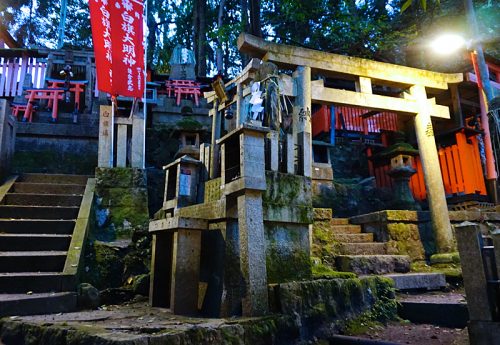
SOME 17 HOURS AFTER BOARDING WE LANDED at Haneda, and began our journey through the labyrinth that is Tokyo. It’s all streets, alleys, and multi-level train stations, and all I could think about were the scenes from shows like No Reservations, Bizarre Foods, and The Layover. I’ve watched these episodes countless times as though somehow they would prepare me for Tokyo. Nope. I was not ready. Not even close.
As we rode the train from Haneda to Tokyo Station, I kept thinking, “This isn’t that bad.” But then we got off the train. Each floor we passed on our way to the main level was a bit noisier, and my heart rate increased. There were thousands of people walking quickly in ever direction. We were two Americans whose command of Japanese is limited to “Sumimasen” (excuse me), “arigato gozaimasu” (thank you), and food terms. Oh, and I can order beer and sake. So much for that 8-week introduction to Japanese class we took last spring.

We found our hotel, and we noticed the first of a few themes of the trip: hospitality. Our concierge had all of our reservation confirmation sheets with maps, directions, and a picture of each restaurant laid out on the counter. The lineup was incredible: two 3-Michelin Star restaurants on subsequent nights, a world class tempura restaurant, and a few other restaurants I’ve followed for a while. We signed each sheet (to confirm our understanding of their cancellation policies) and were escorted to our room. We dropped our bags, splashed some water on our faces, and headed out into the city to get our first bite to eat.

Seafood at Isomaru
We headed down a promising street lined with izakaya of all types. We walked by place after place filled with salarymen and Japanese youth. There was ramen, katsu, yakisoba, and a seafood izakaya that jumped out at us with its “24hr” sign. We peeked inside and saw a tank full of live fish and shellfish and tables with small gas grills on the side. But we were intimidated. What if they don’t speak English? What if we don’t know what any of the food is? What if this place isn’t very good and we miss out on something better?
We decided to walk around a bit to see if there was anything else. As we walked all I could think about was those fish swimming around and how much I wanted to eat them. We walked back to it and noticed a sign stating “ENGLISH MENU.” That was it…this was where we were eating.
We learned that it was Isomaru, just one of many locations throughout the city. We ordered a few dishes, live aji sashimi pulled straight from that tank, kani miso (which we learned was their specialty), hotaru ika shiokara served in its own ink, and live sazae (a giant sea snail type creature) that you grill in shell and eat whole after removing from the shell. If chain restaurants like this existed in the US our food scene would be so much better. This meal reinforced what everyone already says: Tokyo is the best food city on the planet, and we were only one meal in.
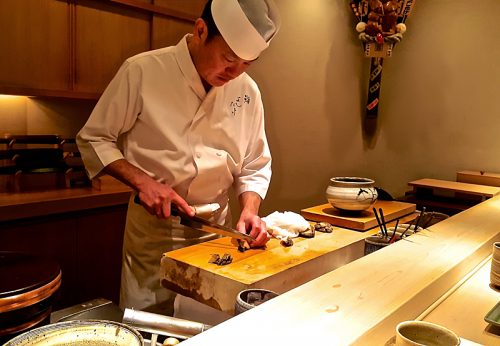
Chef Masahiro Yositake
THE NEXT COUPLE OF MEALS WERE GUARANTEED to be life changing. First, a 3 Michelin star sushiya called Sushi Yoshitake.
Yoshitake-san is widely considered to be one of the best Sushi chefs in Japan, alongside Jiro-san. They are most often mentioned in the same breath. Our hotel concierge offered us both Sukiyabashi Jiro and Sushi Yoshitake but recommended Yoshitake. (Why not the famous Jiro? We were told that dining at Jiro feels like tasting a test—more pressure to eat as fast as he makes it, than pleasure—and it’s over in half an hour.)
Sushi Yoshitake, a tiny 7 seat sushi bar in an office building in Ginza, Tokyo’s equivalent of the Magnificent Mile, was nearly impossible to find. We managed to walk into the right building where we found other foreigners waiting. As the maître’d opened the door there were distinct aromas of yuzu, cedar wood, and intensely aged fish. The last is one of the best smells I’ve ever encountered. We stepped inside and were seated at the end of the counter in front of Yoshitake-san’s assistant. He and Yoshitake-san bowed and greeted everyone in remarkably good English. He explained the menu and offered each of us sake on the house in celebration of the New Year.
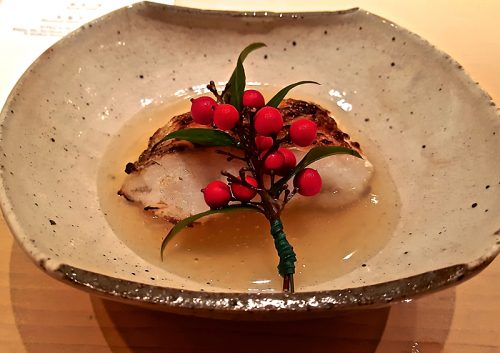
Here is where an onslaught of perfectly cooked fish courses and sushi began. This is also where I was introduced to one of the things that truly stuck out to me during this trip: temperature. Everything was perfectly temped, ready to consume immediately. The charcoal grilled Amadai, the shari, the neta, the green tea, and even the miso soup we finished the meal with—all at perfect temperature. After each meal we talked about what we thought we should take away, and temperature became the most frequently discussed point for us. Everything from tea to toilet seats was at the perfect temperature. There’s a clear attention to ensuring that no part of the body is shocked.
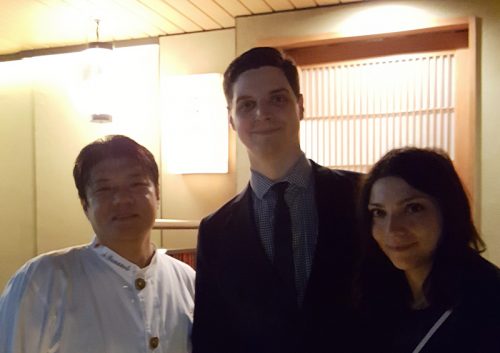
No photos allowed at RyuGin—except this one after dinner
OUR NEXT BIG MEAL WAS AT THE LEGENDARY kaiseki restaurant RyuGin, currently ranked number 31 in the world and number 5 in Asia by the World’s 50 Best.
RyuGin is my The French Laundry, Seiji Yamamoto standing in for Thomas Keller. I watch his every move in the media. He was once a progressive advocate of molecular gastronomy, which led to him being shunned by the other kaiseki chefs of Japan. What he thought the most traditional food of Japan should be, was considered a slap in the face to those who trained him. He took traditional kaiseki cuisine and pushed it to a level never seen, but it was seen as insulting.
Was this just jealousy? I think so. He later returned to a purer form of kaiseki, which is what he serves now. There are still hints that he is trying to progress the cuisine: a sugar strawberry filled with strawberry powder that is smashed at the table and topped with a strawberry compote. He has posted videos on Youtube for a few years now that go step by step through his process, which is how I came to understand his philosophy and really fall in love with Japanese cuisine. Like Bourdain, I have watched and studied his videos to learn what he’s doing.
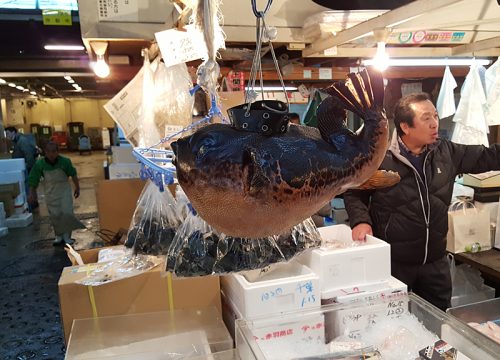
Fugu (blowfish) at the Tsukiji fish market
We were served a dish I have watched him make close to 100 times. It’s a kuruma ebi dumpling served in an owan with ichiban dashi. I have such an attachment to this dish that I literally shed a tear as I ate the first bite. This meal was where I realized that authenticity, even in its country of origin, is not all that matters.
Here is a chef practicing the most traditional form of Japanese cuisine serving things that look very simple, but are very technical and modern. He even took hamo, a variety of eel, to a local medical center to have an MRI performed on it so that he would know how many cuts needed to get through its notoriously difficult-to-handle bones. Sure, his ingredients, dish presentations, and structure are authentic, but his technique is not traditional. He is paying respect to tradition but not limiting himself by what he can use. Still, he is considered one of the one of the best kaiseki chefs in Japan and one of the best chefs in the world.
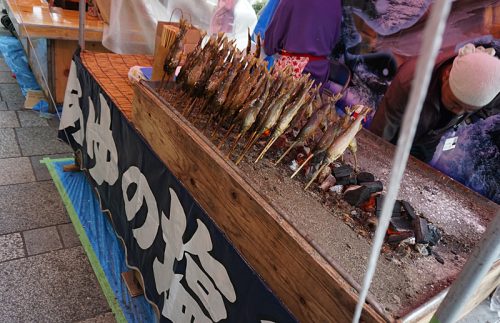
Street fish
This restaurant taught me about timing, which is a big deal in Japan. The trains are always on time, people are at least 15 minutes early to everything, and your meals are coursed so as not to overwhelm you. Luckily I grew up with the rule “if you are on time you are late; if you are early, you are on time,” so this is something I appreciate.
Every dish came at the right time. The server was there as soon as you might have a question. It was so beautifully timed that you never felt rushed or slowed. Similar to the temperature thing, it’s like someone was standing there with a stopwatch, camera, and thermometer to make sure each point was correct before the next step happened. Seiji Yamamoto truly inspired me to not be bound by tradition, but to respect it. To finally meet Yamamoto-san and get to taste his food is a thing that will stick with me forever. He even invited me for a three-month stage, which leads me to my next discovery of the trip.
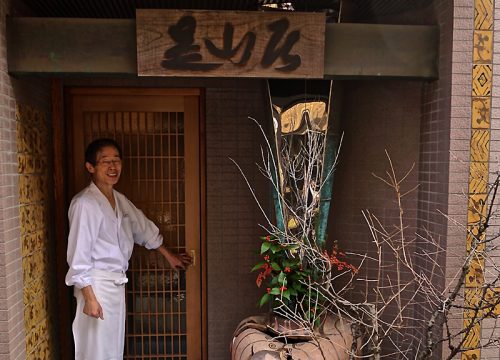
THERE’S A CONCERN THAT I’VE HAD FOR A WHILE, that is partly why I made this pilgrimage. It was the question: do I need to live in Japan in order to have legitimacy? It’s not my native cuisine, so do I need to be immersed in the culture? Do I need to study under the best chefs in Japan for credibility like many chefs traveled to France in the 70’s and 80’s before opening places like The French Laundry? Do I understand the cuisine as well I think?
For me this question was answered throughout this trip. I learned that I don’t need to live in Japan. I do understand the technique, the flavors, the cuisine.
At nearly every meal I was asked how I knew so much about Japanese cuisine. Sometimes it was the maître’d, sometimes the server, sometimes the chef. At Yoshitake, for example, Chef was explaining an item and I asked if the fish came from Kyushu. That’s where it’s found in its highest concentrations. He asked how many times I’d visited Japan and how I possibly knew about this fish. At RyuGin I asked the server about a sauce that he hadn’t described. He told me the English name, which I didn’t know. I asked him if it was Fukinoto, the Japanese name, and he told me I was right and asked me whether I had trained in Japan.
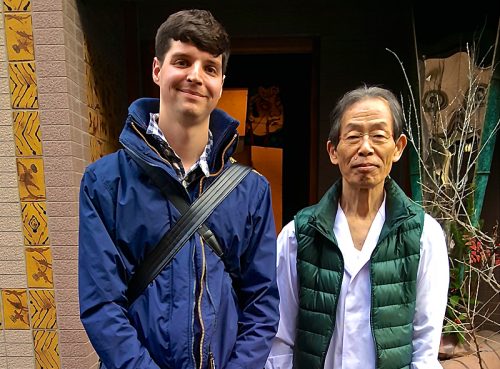
At Mikawa Zezankyo, a Michelin-starred tempura place, Chef Saotome-san watched me study a few pickles that were served before the final dish. He looked at me and began to describe each. One tasted like a pickle I know, which is normally a vibrant purple due to the use of red shiso, but his wasn’t purple (he uses green shiso). His description led me to ask if it was shibazuke. He got excited, confirmed I was right, and told me all about the rest. He was speaking Japanese, but I know food terminology well enough that I understood. At the end of the meal he greeted us outside, shook my hand, bowed, and posed for a picture. I like to think it was his way of saying “hell yeah, an American who actually gets it.” Though he was probably just showing that amazing Japanese hospitality.
I feared that I might not like the food. I feared that it might be too good. I feared that I might not be good enough to do it justice. I worried that I’d need to move to Japan and train under the masters before I could really understand the cuisine. All of those fears faded the more we ate.
This trip was one of validation. Am I up to the task of branching out in a cuisine so steeped in tradition? Can I cook at a level and with enough respect to these traditions that guests will get why I’m doing what I’m doing? Does it matter that I’m a gaijin cooking Japanese food? Do people care?
I think this trip answered most of these questions for me. I had things that I know I can’t make, others I felt I could match, and even a few that I felt were subpar. (Even in Tokyo, not everything is going to be amazing.) But how do I translate what I saw, tasted, and experienced while being true to the cuisine and also true to myself as a chef?
I think a lot of that comes down to being respectful of tradition while being authentically me. Japan taught me so much in just six days. I learned about true hospitality, perfect temperatures, incredible timing, and that I am on the right path.

Scott Malloy will be working next in California wine country.
Latest
Join the Discussion
After you comment, click Post. If you're not already logged in you will be asked to log in or register with Disqus.





